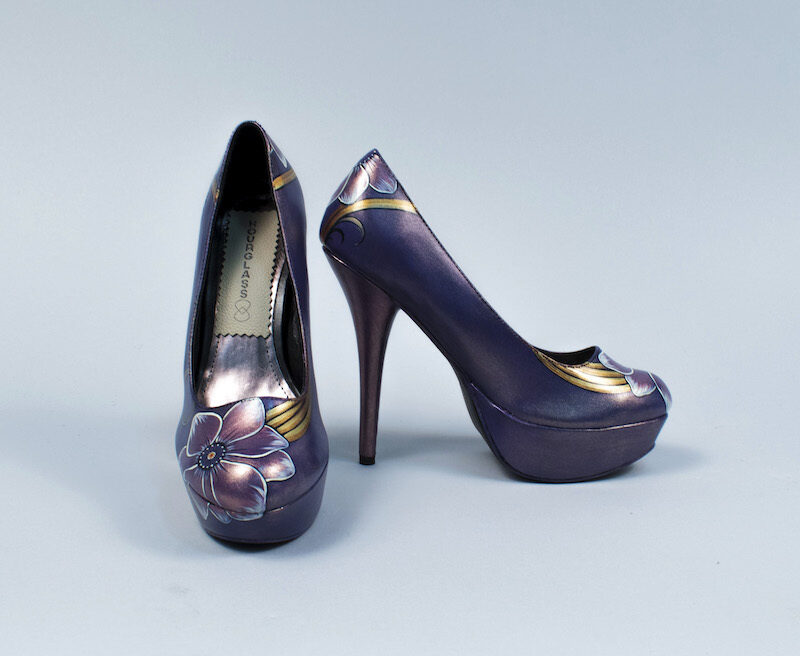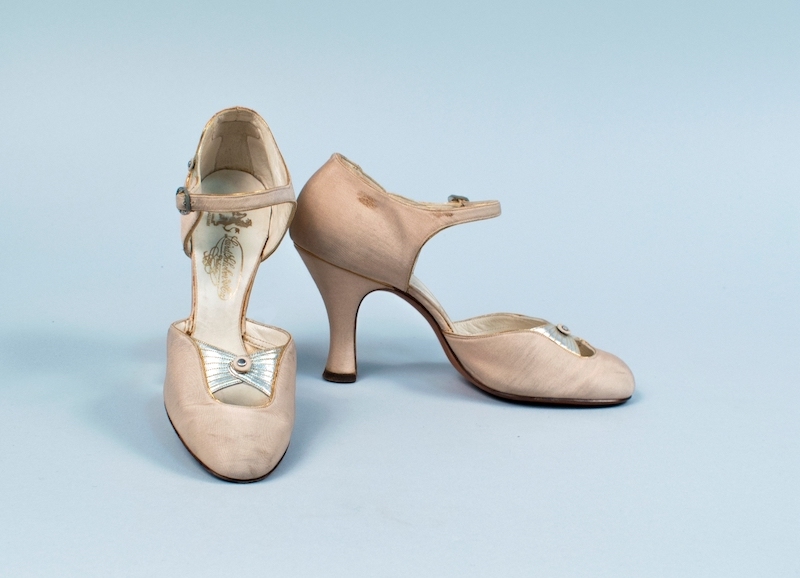A New Way To Interface With History
Review of Behind the Seams: Fabulous Footwear presented by MOHAI
Written by Teen Writer Frances Vonada and edited by Teen Editor Lucia McLaren

Fashion serves as an extraordinary mark of humanity because it is such a personal channel of expression, yet countless outside forces also influence it, including the political and social climate of the time. This is why Behind the Seams: Fabulous Footwear is a window into not only the fashion history of Seattle but also the lives of people who lived years ago.
Curator of Collections at the Museum of History and Industry (MOHAI), Clara Berg, presented this hour-long event, which is currently available for free on MOHAI’s YouTube channel. The event features 13 pairs of shoes designed or sold in Seattle, from the early 1900s to the present, sorted into categories such as “small details” or “embellishments”.
The artifacts themselves were stunning. One silver pair of shoes from the 1920s featured delicate silver and gold leather woven across the strap—a detail that could have only been hand-sewn. A pair of brown leather pumps with a narrow spike heel came straight off the runway of the 1962 Seattle World’s Fair, with black leather contrast around the toe box, forming a sort of harness around the front of the wearer’s foot.
A pair of 1920s evening shoes made of pale pink silk include a delicate detail at the toe: two silver leather wings clasped together by a button. The outer sides of the heels mimic this element with two more dainty buttons. Berg points out that these details were small enough that they would likely not be noticed by people other than the owner. And yet, we are privy to these details, giving us a glimpse into this person’s life.

Berg says, “Artifacts are really powerful because they’re these physical objects that have outlived people… [They] can tell you a lot about what people had valued, and what people spend time with, what kinds of things they thought to save. But there’s also this mystical quality of artifacts. We can sort of imagine it: ‘Why did they love this pair of shoes?’, ‘What did they wear it to?’, ‘What kind of events did this pair of shoes get to see?’”
The event is a feast for the eyes, but the most memorable aspect is the context that surrounds each piece, especially the shoes in the “referential” category. Inspired by previous eras, the designers of these shoes incorporated the signature silhouettes or embellishments of a previous time, creating a new piece that is reminiscent of the original style.
This type of inspiration and reinvention is not limited to shoes, and you can trace parallels in design throughout fashion history. The bold shoulder pads of the 1980s exaggerate the strong uniform lines that were fashionable in the war-time of the 1940s. Similarly, platform shoes from the 1940s also inspired the platform shoes of the 1970s. The relationship between styles in different eras connects and unifies history tangibly and visibly, which is fundamentally different from an academic understanding of history.
When I asked Berg about what the markers of current fashion are, she touched on the pandemic, the topic of race, and climate change, all of which are major issues today. In light of climate change, designers are looking for sustainable options for clothes and textiles that are created with green farming practices. Designers are also focusing on creating clothes without exploiting workers, as well as making pieces durable enough to last several years to avoid contributing to the literal millions of tons of textile waste per year. This is a tall order in addition to the effort to lift up and support Black and Indigenous designers, who have been historically sidelined in the industry.
On a lighter note, the pandemic has influenced fashion by evolving comfortable clothing to be more stylish, lending some flare to outfits for around the house. I asked Berg what she believes style will be post-pandemic, and she was unsure. Will people rush out of their house dressed to the nines to celebrate? Or will comfortable clothes prevail?
Whatever the future holds, viewing fashion pieces like shoes in this new light provides a window to a previous era. By dressing in vintage styles, studying the artifacts, or simply admiring the aesthetics, these extant pieces allow us to interact with history at an emotional level normally inaccessible in a classroom. They connect us to past lives and unite us in the long continuum of human history.
Lead Photo Credit: Hand painted "You're Turning Violet, Violet" heels, artist Rachel J. E. Sprauge for Hourglass Footwear, 2013 MOHAI, Gift of Hourglass Footwear.
The TeenTix Newsroom is a group of teen writers led by the Teen Editorial Staff. For each review, Newsroom writers work individually with a teen editor to polish their writing for publication. The Teen Editorial Staff is made up of 6 teens who curate the review portion of the TeenTix blog. More information about the Teen Editorial Staff can be found HERE.
The TeenTix Press Corps promotes critical thinking, communication, and information literacy through criticism and journalism practice for teens. For more information about the Press Corps program see HERE.


